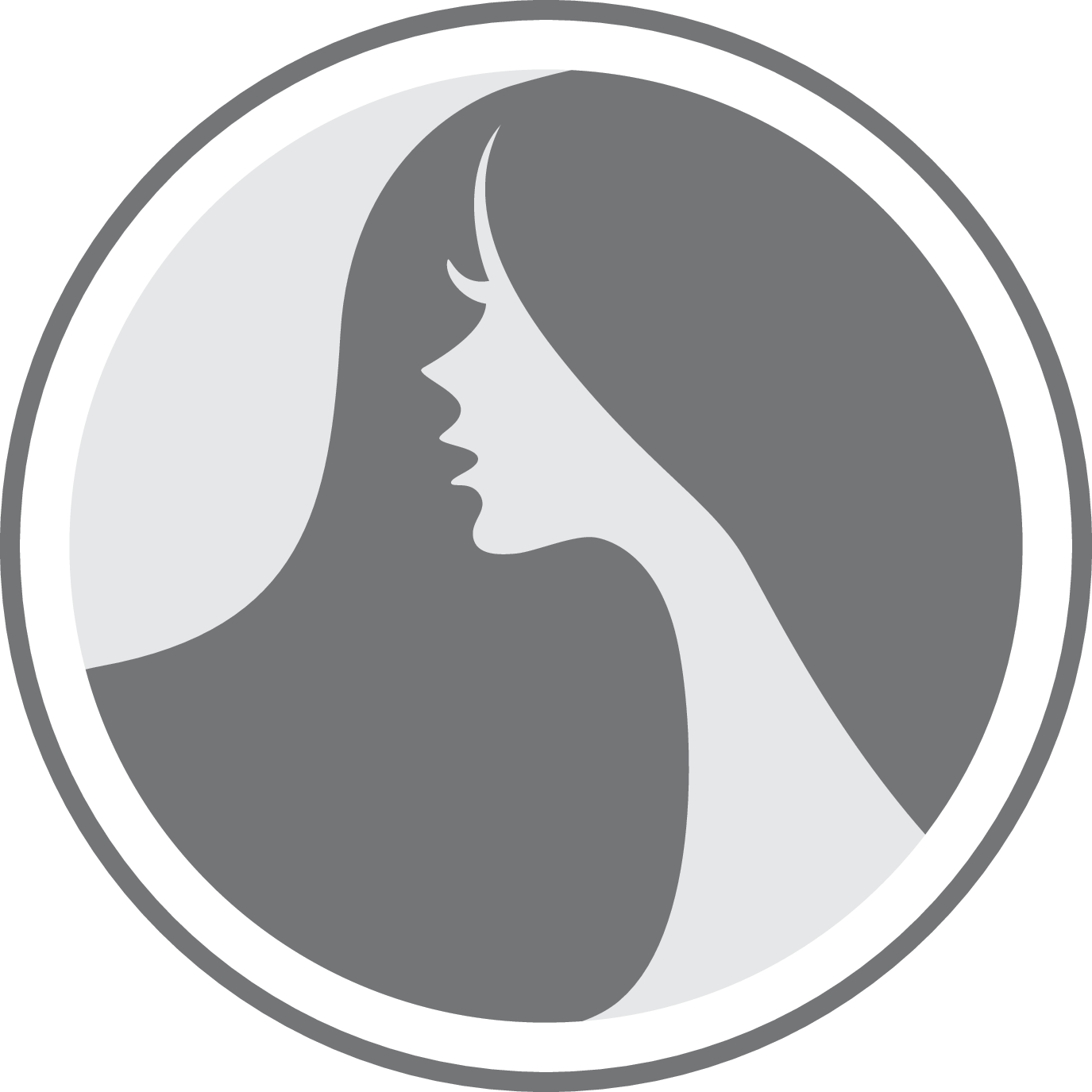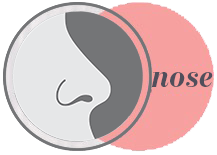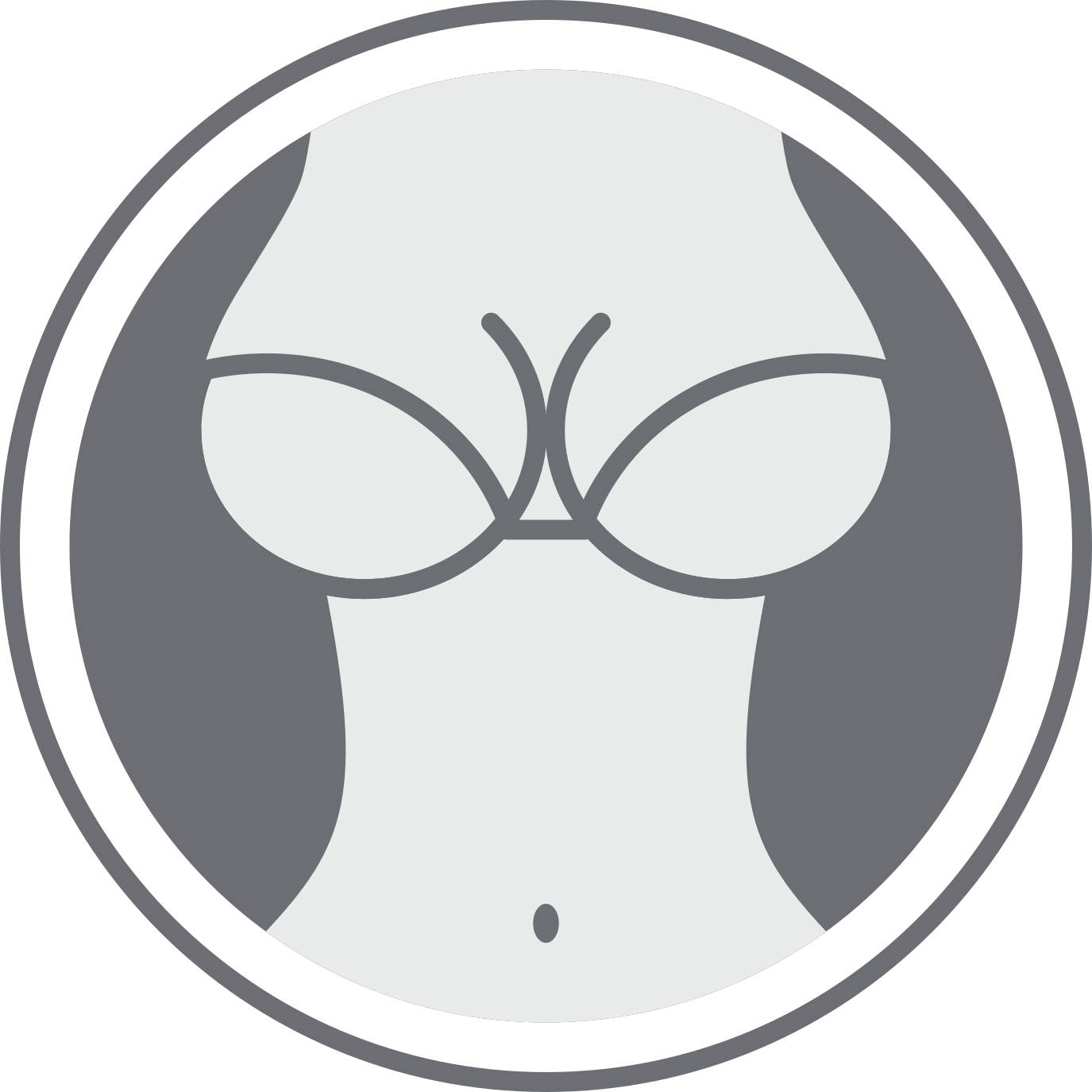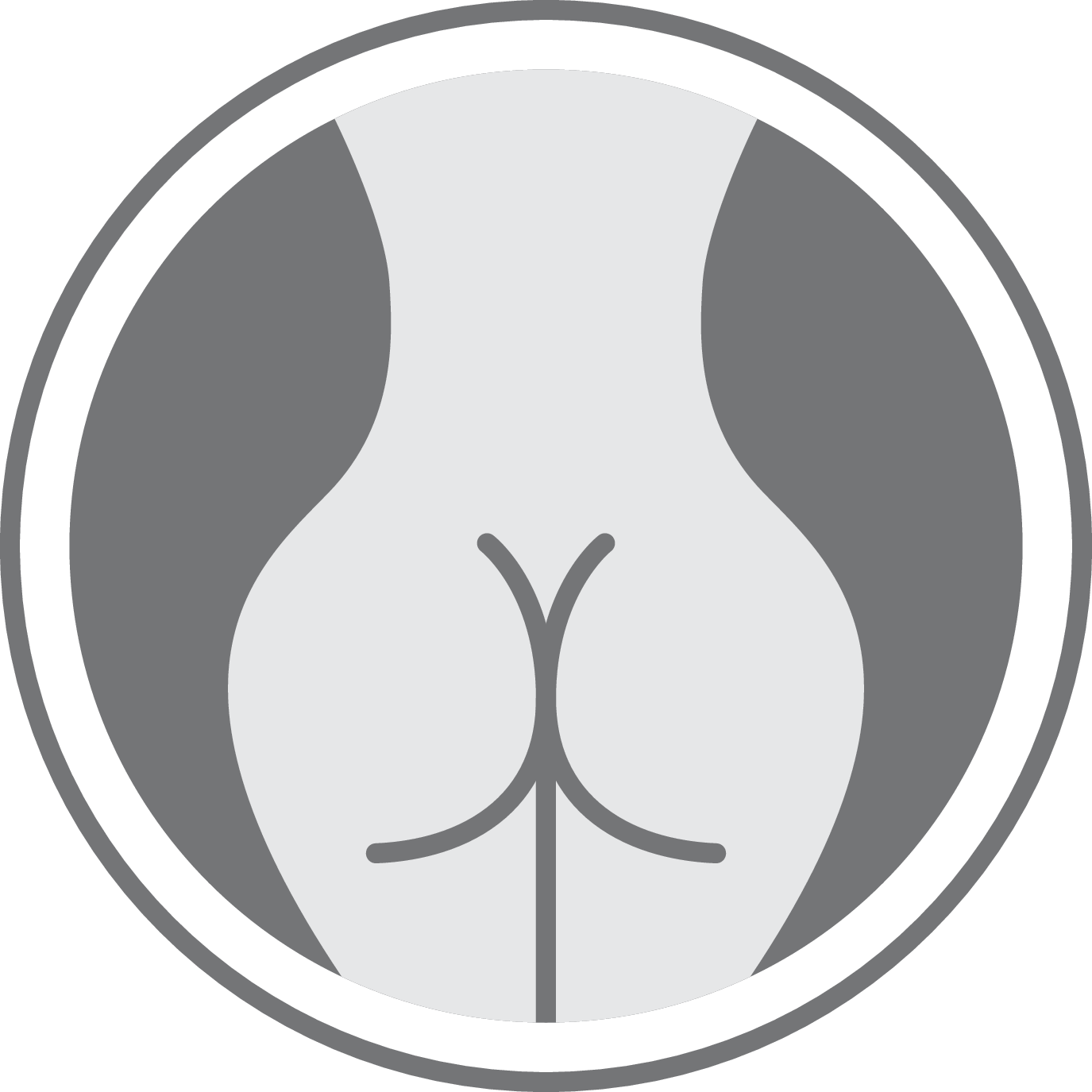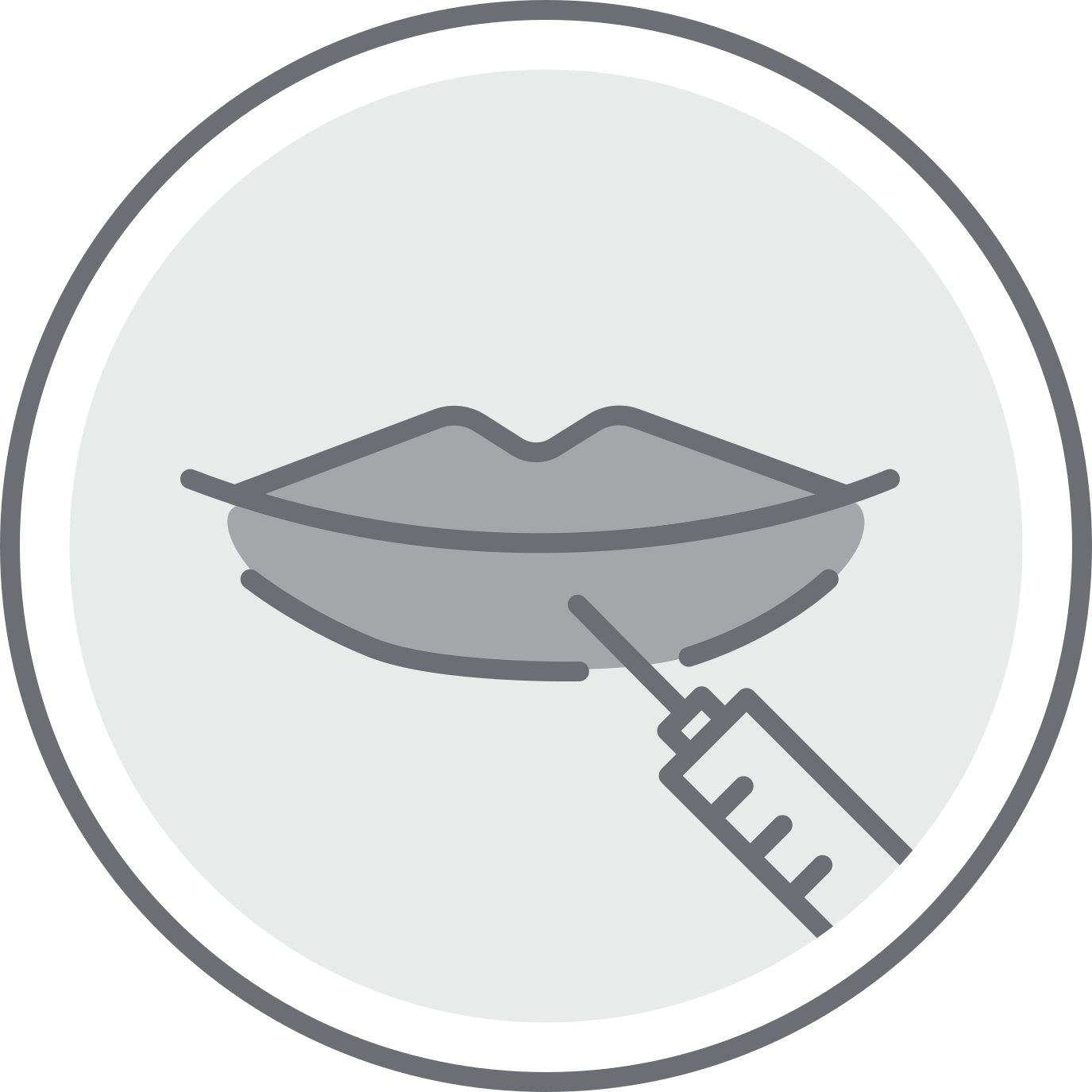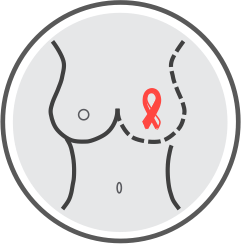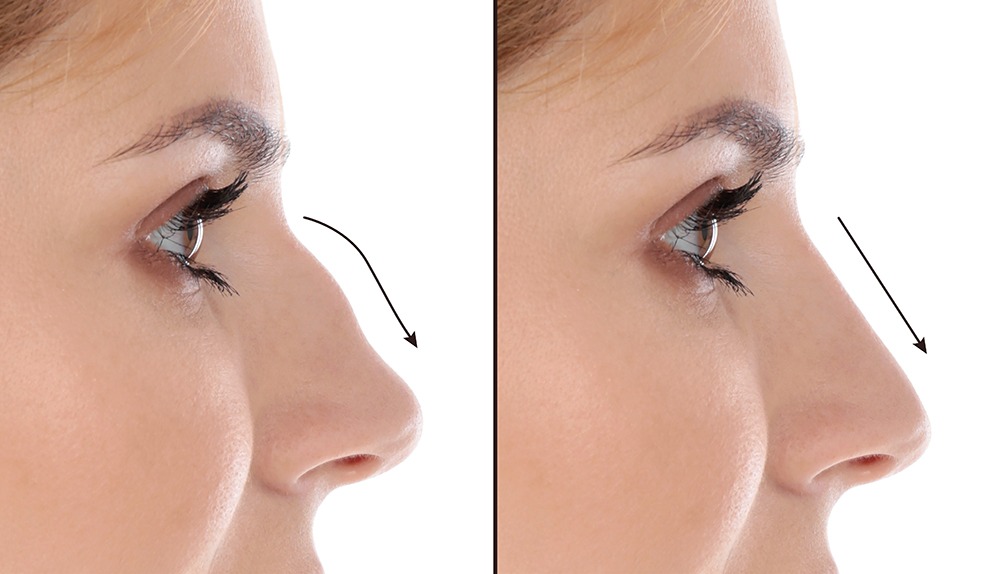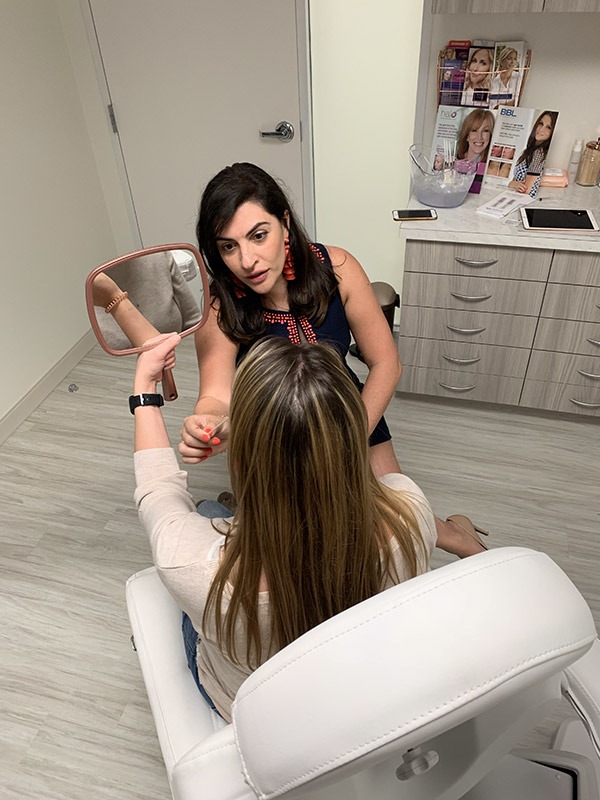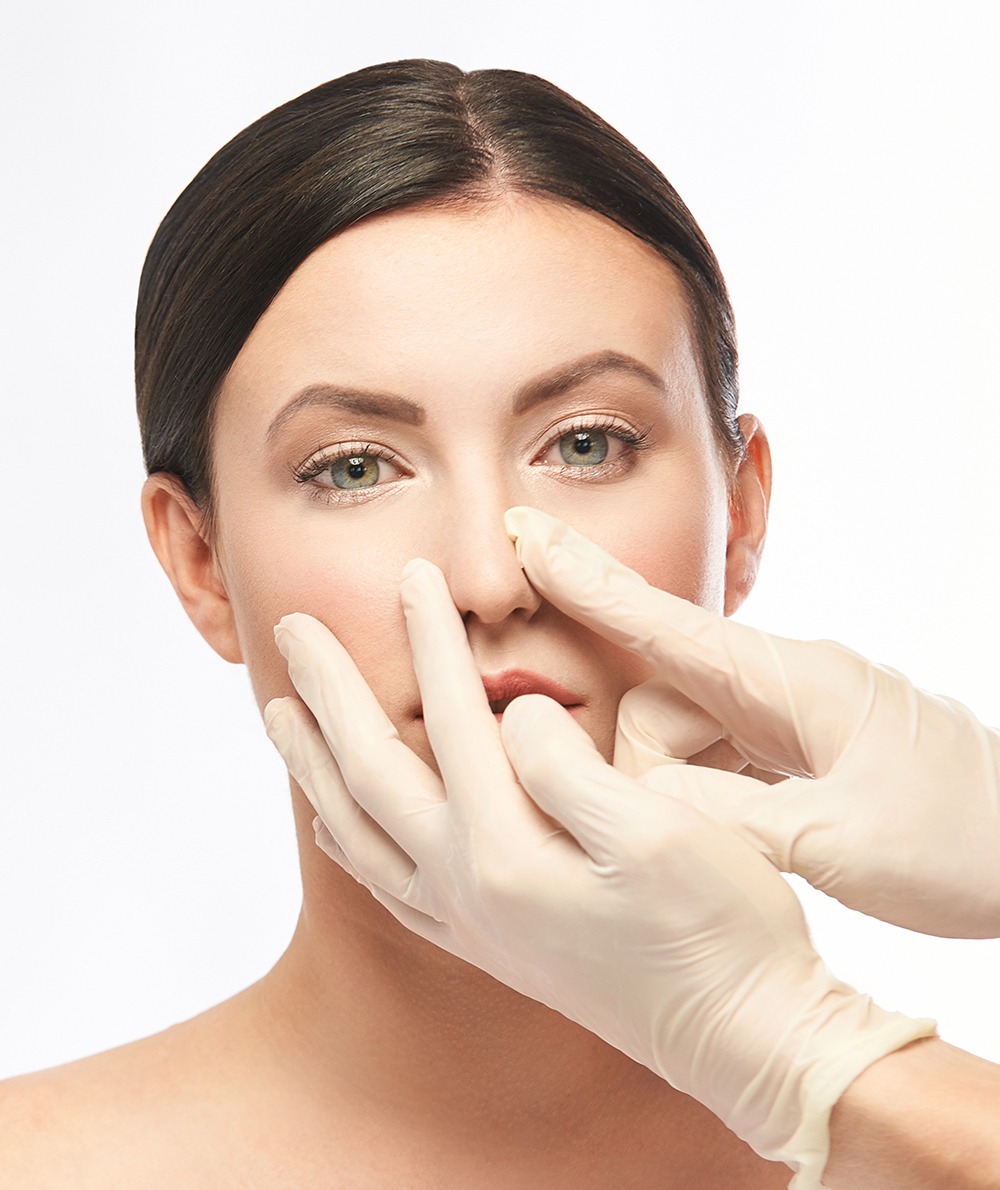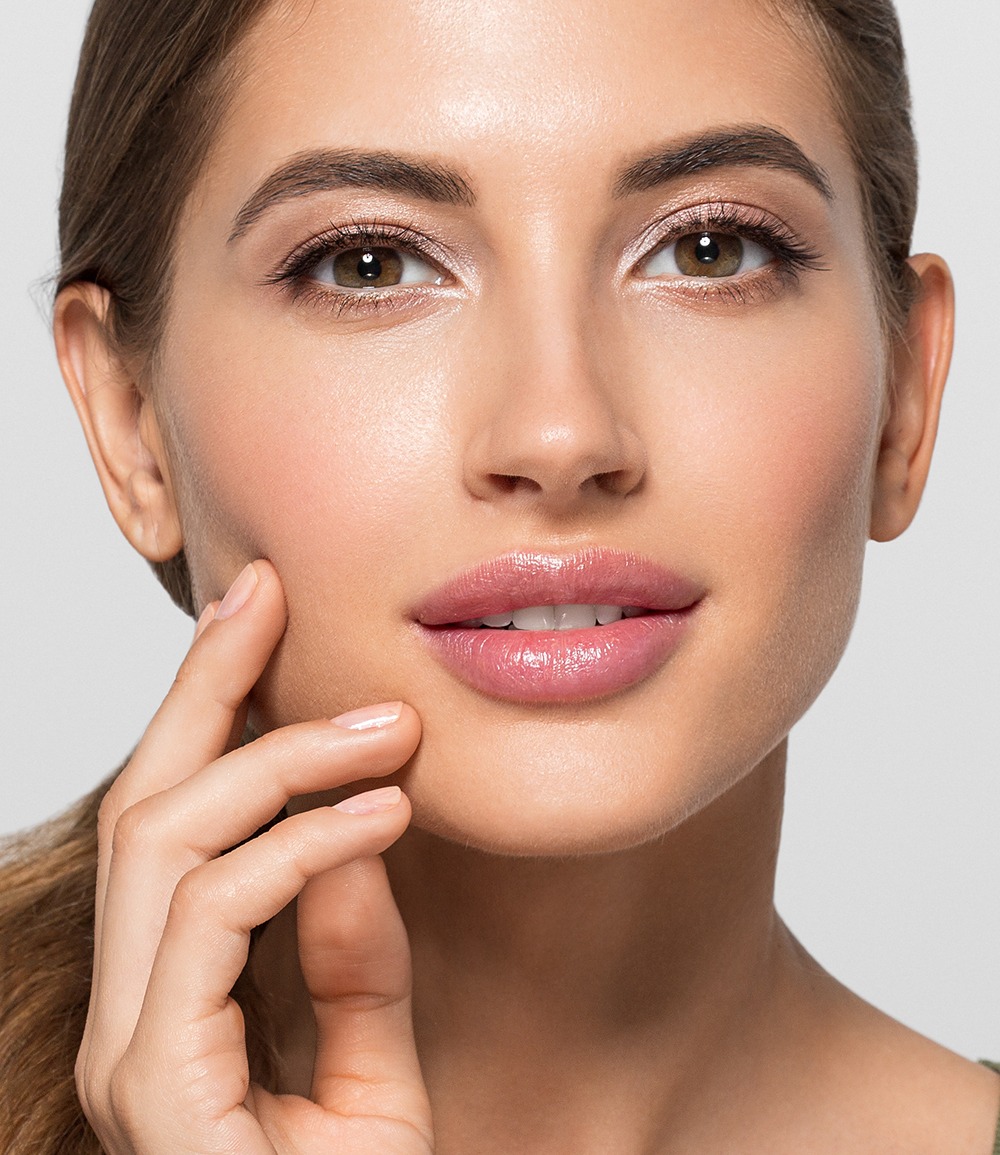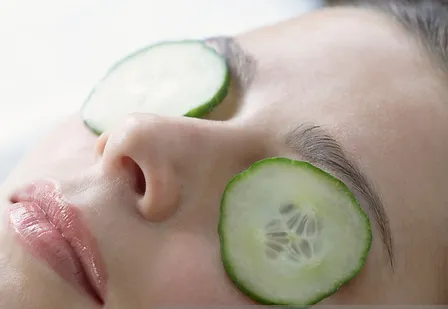Procedures
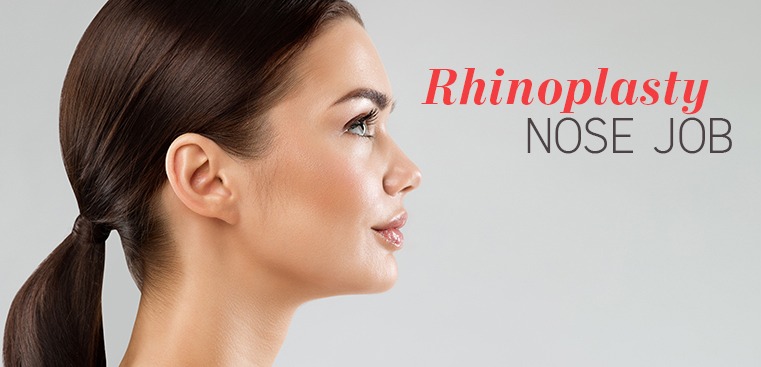
The perfect nose does not exist. No single nose fits every face.
Rhinoplasty in Dallas, TX
There is, however, an optimal nose for each individual, one that is in balance with other facial features and not a distracting focal point. Rhinoplasty, or a “nose job,” can give you the nose nature intended, that either facial trauma or puberty botched. Whether your concerns are cosmetic or related to nasal airway obstruction, a well-executed rhinoplasty can be transformative. Revitalizing your appearance and functional breathing, rhinoplasty can boost your confidence to propel you forward, personally and professionally.
the scoop
Rhinoplasty is accepted as one of the most technically challenging plastic surgery procedures. The stakes are high; the room for error is low; there are anatomic limits to what is possible, and ultimately the desired result is a personal preference that can be tough to define. Rhinoplasty can lead to some of the most rewarding transformations when performed properly. Dr. Deniz Basci is equipped with the experience and expertise to help you identify and define attainable nasal goals. She uses VECTRA® 3D imaging during your consult to illustrate what she observes on exam and how you can expect your nose to realistically appear after surgery. Watching as she fine-tunes your nose on screen during your consult, allows you to participate and articulate your preferences until both you and Dr. Basci agree upon an end point.
Every nose is different which means the underlying structural anatomy is also quite varied. The key to an exceptional result begins before ever setting foot in the operating room. Dr. Deniz Basci begins the consultation by listening to what bothers you about the appearance and function of your nose. She then performs a precise and complete facial analysis with a distinct focus on nasal morphology. Identifying specific aesthetic and functional deformities informs what intrinsic anatomic abnormalities she is likely to find in the operating room. This information enables Dr. Basci to formulate a decisive operative sequence conceived to target each component of the nose.
Dr. Basci strives to produce exceptional results for every patient. Her clear communication style, customized surgical planning and meticulous operative technique should afford you confidence and peace of mind that you and Dr. Basci are on the same page. Having completed advance training in rhinoplasty and revision rhinoplasty with some of the best surgeons in the world, Dr. Basci specializes in creating favorable shadows and highlights to enhance the appearance of your nose while bringing it into balance to blend with other facial features. Each custom-tailored surgical sequence also includes maneuvers to prevent common pitfalls in rhinoplasty and prevalent secondary deformities, ensuring you a long lasting result.
The nose is a key and central defining feature of the face. When it is out of proportion or distracting, the nose can throw off the entire balance of your face making you feel self-conscious. Rhinoplasty is a powerful procedure that can dramatically improve both the form and function of your nose. It is important that the nose fits the face but also serves the body. The airway and the aesthetic appearance of the nose are closely related, manipulating one will impact the other. Dr. Basci takes proper caution to protect your airway and improve your breathing in the process of refining external nasal shape. Accurately performed rhinoplasty requires precision, a keen aesthetic eye and extreme technical skill. Dr. Basci will work closely with you to confirm the desired endpoint is met and exceeds your expectations.
Setting Expectations
Limits to What is in our control
A Rhinoplasty CAN:
- Smooth the bridge and remove a hump
- Straighten the nose
- Improve nasal symmetry
- Erase irregularities along the dorsum
- Increase or decrease the size of the nose
- Raise or lower nasal tip rotation
- Increase or decrease nasal tip projection
- Improve nostril shape and symmetry
- Remove airway obstruction
- Support weak or collapsed areas
- Narrow the nasal base
- Narrow the bony dorsum
A Rhinoplasty does NOT address:
- Change quality of nasal skin
- Control the healing process and scar formation
- Eliminate all asymmetries
- Improve allergies
- Frown lines between the eyebrows
Fast Facts:
- Initial Visit: 1 hour consultation with Dr. Deniz Basci using VECTRA® 3D medical studio photography to customize your treatment plan and answer all your questions
- 1 week Before Surgery: pre-operative visit to confirm the plan and goals for surgery, review pre and post-op instructions, answer all your questions
- Surgery: 2-4 hours depending on your individually tailored operative sequence
- Anesthesia: General Anesthesia – performed by a licensed physician
- Immediately After Surgery: Go home the same day with internal and external nasal splints to begin recovery
- Recovery:
- 1st week: home bound, nasal splints and sutures in place, expect moderate to intense swelling of the nose and bruising that extends around the eyes. Mouth breathing until splint removal at your 1 week appointment
- 2nd week to 3 months: “restaurant ready” and able to appear in public with light make up without anyone knowing you’ve had a procedure, nightly taping of the nose to protect the shape and controlswelling, resume light aerobic exercise, avoid any contact sports or activities that risk trauma to the nose
- 3 to 9 months: “camera ready,” show off the new you, slowly able to resume heavy lifting and intense activities; expect gradual improvement in swelling from top to bottom. The tip is often the part of the nose that remains swollen the longest. Return to the office for possible steroid injections if indicated
- 12 months before the “final result” incisions are fully mature and swelling is completely resolved, time for any minor revisions or touch ups.
Preparing for Surgery
Prior to any surgery Dr Basci will review your general health history, surgical history and current medications. You will need to stop taking any medications or supplements that increase the risk of bleeding (aspirin, NSAIDs, fish oil, etc) 2 weeks before surgery and remain off of them for 2 weeks following surgery. Make sure to check with your primary prescribing physician before stopping any medications.
It is important to prime your body with a healthy balanced diet in the months leading up to surgery. Make sure you have the appropriate protein intake. Protein is vital for healing. You may need to supplement your diet with protein shakes or bars for 3-6 weeks after surgery as your body works overtime to heal the surgical site.
Rhinoplasty Techniques:
Rhinoplasty is the process of planning, designing and reconstructing the structure of the nose, much like architecture, except the materials used are dynamic and subject to the forces of healing. Classically, there are two approaches to nasal surgery: open and closed.
Closed Rhinoplasty
In the closed technique, all of the incisions are hidden within the nasal passages. This technique is sometimes toted as being less-invasive, but most of the time it is precarious to accurately make the necessary changes and precisely secure structures to produce the optimal result. The closed approach is best reserved for limited rhinoplasty procedures in which only one or two specific components of the nose are being addressed, like smoothing a dorsal hump or resecting a deviated septum.
Open Rhinoplasty
Precise tip refinement, straightening the nose, re-supporting the mid-vault and any other technically demanding adjustments are best performed through an open approach. During and open rhinoplasty, a small incision is made across the external skin of the columella, the dividing barrier between your nostrils, and along the inner nasal sills. The nasal skin envelope is meticulously peeled up and out of the way allowing full access to the underlying structural units of the nose: the nasal bones, lower lateral and upper lateral cartilages, and the septum.
Dr. Basci analyzes the strength, quality and orientation of the nasal cartilages and cross-references the pre-operative plan to make sure she accurately repositions and reconfigures the necessary components. She takes a systematic approach supported by an intimate knowledge of nasal anatomy. In most cases, Dr. Basci removes a section of non-weight bearing septum. This can relieve airway obstruction if the septum is deviated and inappropriately narrowing the nasal passage. The cartilage removed is used to fashion grafts that are then used to support and shape nose. In some cases, if extra support is needed or there is not enough septal cartilage, Dr. Basci uses ear cartilage, rib cartilage or “off the shelf” cartilage grafts to reconstruct the nose. Each procedure is customized to the individual nose.
Final Touches
The incision is closed using a meticulous suture technique to give you the best chance of an imperceptible scar. The position of the incision along the basal surface of the nose makes it almost completely hidden; no one except maybe your dog should see it. After the nose is closed, Dr. Basci evaluates nasal base width and nostril width and determines the need for additional techniques to refine the final result.
Rhinoplasty truly represents an intersection between art and technical precision; the architecture of plastic surgery. Dr. Basci appreciates the significant impact subtle changes can have on the nose. There is very little room for error or imperfections because there is only skin, no soft tissue, to pad or camouflage the nasal construct. During the procedure Dr. Basci is constantly checking external nasal appearance after each maneuver and finessing as needed to upgrade your outcome. Rhinoplasty is Dr. Basci’s passion. A clear and confident picture of the desired endpoint and exceptional skill to execute exact techniques are non-negotiable keys to success in rhinoplasty.
Recovery from Rhinoplasty
Just as every individual procedure is distinct, so is every personal recovery. Most patients will go home the same day as their procedure. Dr Basci recommends you have a family member, friend or nurse to stay with you for the first 24-72 for your comfort, although 1 week is receommended. You should expect moderate to intense swelling of the nose and cheeks with bruising that extends around the eyes the first week after surgery. You will have external and internal nasal stents that protect and stabilize your nose while healing takes place. The swelling typically peaks on post-operative day 3 and then gradually begins to resolve over the ensuing months. It is not uncommon for it to take 12-16 months for complete conclusion of swelling.
Most patients require prescription pain medication the first 5-7 days after surgery. You may shower as long as your nasal splint does not get wet. Angle your face away from the water head in the shower, and use face wipes instead of washing your face until the splints are removed. It is normal to have blood tinged drainage from your nose the first 24-72 hours. You must keep your incisions clean, using bacitracin ointment and a soft cotton tip applicator twice daily.
Any non-dissolving sutures will be removed in the office 1 week after surgery at your first a post-operative visit. You will need to continue to apply a thin layer of ointment to your incisions once a day until they are fully healed and protect the incisions from sun exposure; Talk to Dr. Basci about when it is safe to begin silicone scar treatment.
After splint removal, Dr. Basci will demonstrate how to tape your nose, which you will continue round the clock for 1-2 weeks to keep swelling at a minimum and maintain the desired shape of your nose until healing progresses. Eventually, you can transition to taping only at night or on days where you notice your nose is particularly swollen. Taping is not optional! It is a critical portion of your procedure and ensures reaching the optimal result.
Dr. Basci recommends you sleep with your head propped up on several pillows or semi-upright in a recliner for the first 1-2 weeks after surgery to minimize facial swelling. You should expect to be moderate to intensely swollen during the first two weeks. This will gradually improve along with any bruising, numbness and tingling.
You will need to begin gently walking several times a day the evening of your surgery. This is to promote circulation and prevent blood clots. If you have a personal or family history of blood clots or other bleeding disorders be sure to speak with Dr. Basci. After two weeks, you may begin light cardio activity but be sure to avoid heavy lifting, yoga, pilates and any other intense exercise for 4 weeks. Typically Dr Basci allows rhinoplasty patients to resume full activities 6 weeks after surgery.
You should supplement your regular balanced diet with protein shakes or bars for 3-6 weeks after surgery to help improve healing. This is not the time for diets or nutritional restriction. Your body needs vital amino acids and building blocks for healing.
If you have any questions or concerns during your recovery, contact us or schedule an appointment to come in for a visit.
Frequently Asked Questions
- How do I choose a rhinoplasty surgeon?
Selecting the correct rhinoplasty surgeon for you is critical to achieving an ideal result. Fundamentally, you and your surgeon should have a similar aesthetic and be able to communicate clearly. Your surgeon should be able to answer all your questions and explain the reasons why certain techniques are recommended. You deserve to be treated as a priority not another number at the practice. At a minimum, you should expect individualized attention, a custom operative plan for your unique nose, and the utmost level care before, during and after your surgery. If you enjoy working with your plastic surgeon and find them relatable, that’s a bonus, but does not take the place of technical excellence of your care.
Tips for choosing the best provider
- A plastic surgeon who is well trained, has specific rhinoplasty experience and technical skill set
- A plastic surgeon who operates in a hospital or accredited operating facility
- A plastic surgeon who listens to you input and factors your goals into the operative plan
- A plastic surgeon who can show you what the ideal result is and the prescribed nose is one that you like
- Another surgeon told me they could perform the procedure without any external scars, can Dr. Basci do that?
This procedure without external incisions is called closed rhinoplasty. Dr. Basci offers both closed and open rhinoplasty in her practice but reserves the closed approach for specific candidates. Those who like the appearance of their tip, but want to adjust their dorsal hump or other limited adjustments may be best suited for a closed approach.
The only external scar in routine open rhinoplasty is a 5-7mm incision along the columella, the vertical slip of skin between your nostrils. The incision is well positioned typically well concealed in face-to-face conversation, being on the undersurface of the nose. This incision allows Dr. Basci to carefully separate the skin to reveal the nasal framework. Having complete visualization of the key structural components of the nose enables Dr. Basci to perform critical techniques with precision and with complete control of multiple variables.
In most cases, the benefits of open rhinoplasty in facilitating an optimal and long lasting visual result, outweigh largely inconsequential external incision.
- I have trouble breathing, will rhinoplasty help me?
The airway and the aesthetic appearance of the nose are closely related. Adjusting one will impact the other. Breathing improves simply by setting structures back in appropriate anatomic position. However, there are many causes of difficulty breathing and not all of them are in the portion of the nose that is manipulated during rhinoplasty. It can be a result of inflamed nasal lining from allergies or nasal obstruction deeper in the airway. During your consultation, Dr. Basci will perform a complete nasal exam, which includes evaluating your nasal airway. She will let you know if you have a deviated septum, turbinate hypertrophy, internal or external nasal valve collapse or other issues.
Rhinoplasty is a purely cosmetic procedure to improve the appearance of your nose. It is not covered by insurance. Correction of a deviate septum, turbinate hypertrophy with a septoplasty or turbinectomy is often covered by insurance. Dr. Basci will recommend the best treatment options for you.
- What is rhinoplasty recovery like?
Every recovery experience is as individualized as their custom procedure. Dr. Basci strives to make sure all her patients have a safe, comfortable and memorable. Typically the nasal splints which are placed at the conclusion of the operation remain in place and are removed 1 week later alone with any permanent stitches. You should expected moderate to intense swelling of the nose and face with bruising that extends around the eyes for the first week. Most patients return to work and their daily routine the second week with light make-up. The final result takes 12-16 months to appear, once the incision is fully matured and swelling is resolved.
You can read more about what to expect during recovery here.
- Is non-surgical rhinoplasty possible?
A “liquid rhinoplasty” or non-surgical rhinoplasty is a minimally invasive technique using injectable hyaluronic acid filler to contour the nose. This method can camouflage the appearance of a dorsal hump, refine the tip, and smooth contour irregularities. Filled in the nose is typically longer lasting that in more dynamic areas of the face like around the mouth and eyes. Patients can expect to need periodic touch-ups to maintain the result.
There are limits to what results can be achieved with liquid rhinoplasty. Dr. Basci will assess your anatomy and recommend the best treatment options to reach your goals.
- When can I expect to see my final result?
- How long after rhino until I can wear glasses?
- When can I blow my nose after rhinoplasty?
- How can I reduce swelling after rhinoplasty?
- How do I clean my nose after rhinoplasty?
The key is to clean your nose after rhinoplasty without disrupting the healing process. Before and immediately after surgery, Dr. Basci will review acceptable cleaning techniques. Either you can used hydrogen peroxide soaked soft T-tips to gently clean the nostril rim, removing any dried material. After your splints are removed, you can use nasal spray to irrigate the nose and maintain good nasal hygiene. Dr. Basci asks that you do not blow your nose for 2-4 weeks after surgery.
Everyone’s face if asymmetric. There is a long and lean side with smaller eye and a short and wide side with a bigger eye. This asymmetry starts all the way down in your bones. The soft tissues resting on top of an uneven surface will always be slightly asymmetric. This is true of your nose. The goal of rhinoplasty is to improve not eliminate asymmetry, to give you the most natural result.
*Disclaimer: Results may vary from person to person. Editorial content, before and after images, and patient testimonials do not constitute a guarantee of specific results.

